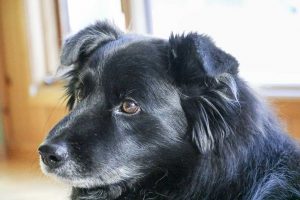“He Ain’t Nothing But a Hound Dog”
by Dr. Janice Mitchell
2018 is the Year of the Dog, and the SPCA has declared it to be the Year of the Northern Dog. Inspired by visiting my sister and her hairy, beautiful, Attawapiskat-born dog Willa, and after a recent loss of a sweet French bulldog, the question of mixed versus purebred has emerged yet again. Now before battle lines of blue bloods or Mudblood (for those Harry Potter fans) are drawn, it must be stated that both mixed and purebred dogs have the common thread of being loyal, clever, happy plus numerous other positive adjectives that have earned the well deserved title of “man’s best friend.”
“Hybrid vigour.” These two words are central to the argument for having a mixed breed dog. It means that by breeding two genetically different dogs, the offspring will show qualities that are superior to those of both parents separately. So, instead of concentrating genes and limiting their outcomes as you would with inbreeding (the mating of related animals), crossbreeding opens up new possibilities and variations. In theory, by selecting two genetically different healthy parents, you will create puppies that should be hardy and more resilient to expressing certain breed specific diseases. Thus, as an example, labradoodles and shih-poos should hopefully develop less genetic related ailments than compared to their purebred parents. To take it one step further, our Northern Dog, for example, generally is a mix of several breeds, so many that we are often guessing if there is a mix of shepherd, lab, collie or beagle somewhere hidden beneath those lovely brown eyes. The variations of this genetic theme are numerous. As a quick note, this has given rise to various DNA tests offered on line to which I say “caveat emptor,” or buyer beware, however that is for another article.
Purebreeds. The word conjures up images of exotic afghan hounds, powder puff bichon frises; and majestic Leonbergers. The reality is the process of bottlenecking genes; breeding of grandsires to their granddaughters thereby creating less variability and a higher chance of genetic related illness. Just think of the familial line of Queen Victoria and the presence of haemophilia, or the disastrous Habsburg royal line…now there’s fodder for a TV series. For a more in depth discussion, BBC aired a documentary “Pedigree Dogs Exposed” in 2008 whereby an RSPCA authority called the famous British Crufts Dog Show “a parade of mutants.” This author’s own personal experience is discovering that a majority of Cavalier King Charles spaniels suffer from a condition known as syringomyelia that occurs from the skull being too small for the brain. These health issues arise when humans breed dogs and select genes for beauty over function, and this restrictive breeding pattern to create a certain phenotype (or look) has resulted in each breed having its own ‘list’ of problems. The Orthopedic Foundation for Animals has a wonderful website that lists the different diseases associated with the numerous breeds. By the way, there are now 340 breeds of dogs in the world according to a recent Google search.
Going back to our protagonist—the Northern Dog—or our mixed breed. Are they entirely exempt for genetic diseases? Nothing in life is 100 percent. Yes, they too can be susceptible as they are after all a wonderful mish-mash of different breeds and the parentage can often be a great mystery. However, the likelihood for demonstrating certain genetic associated diseases is less if the intentional matings of mother-son or father-daughter do not occur. This author is also not denouncing all purebreeds either. Purebreeds are generally a guarantee of either look or function and are wonderful especially if you are requiring a certain need. For example, border collies for herding sheep; German shepherds for police work; or even a sneeze free Havanese hypoallergenic dog. As with every decision in life, research and education will put you one step ahead. Excellent dog breeders care about the healthy propagation of their breed and are not in it for profit. They will actively aim for selecting healthy parents via various genetic tests and limit the inbreeding possibilities.
Either decision you make, whether it be mixed or pure, you are always guaranteed of having a wonderful friend/companion in your home/life. I encourage all readers to check out these websites/links: 1) the Ontario SPCA with its article on the Northern Dog; 2) The Orthopedic Foundation for Animals (www.ofa.org); and 3) the BBC Documentary ‘Pedigree Dogs Exposed.’ Until then, Willa the black hairy dog wishes you “Kung Hei Fat Choi”…a happy New Dog Year full of sloppy kisses; belly rubs; and wagging tails.





